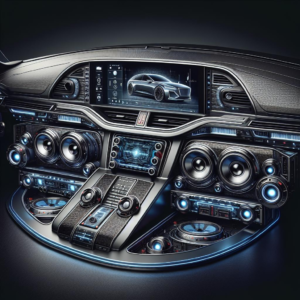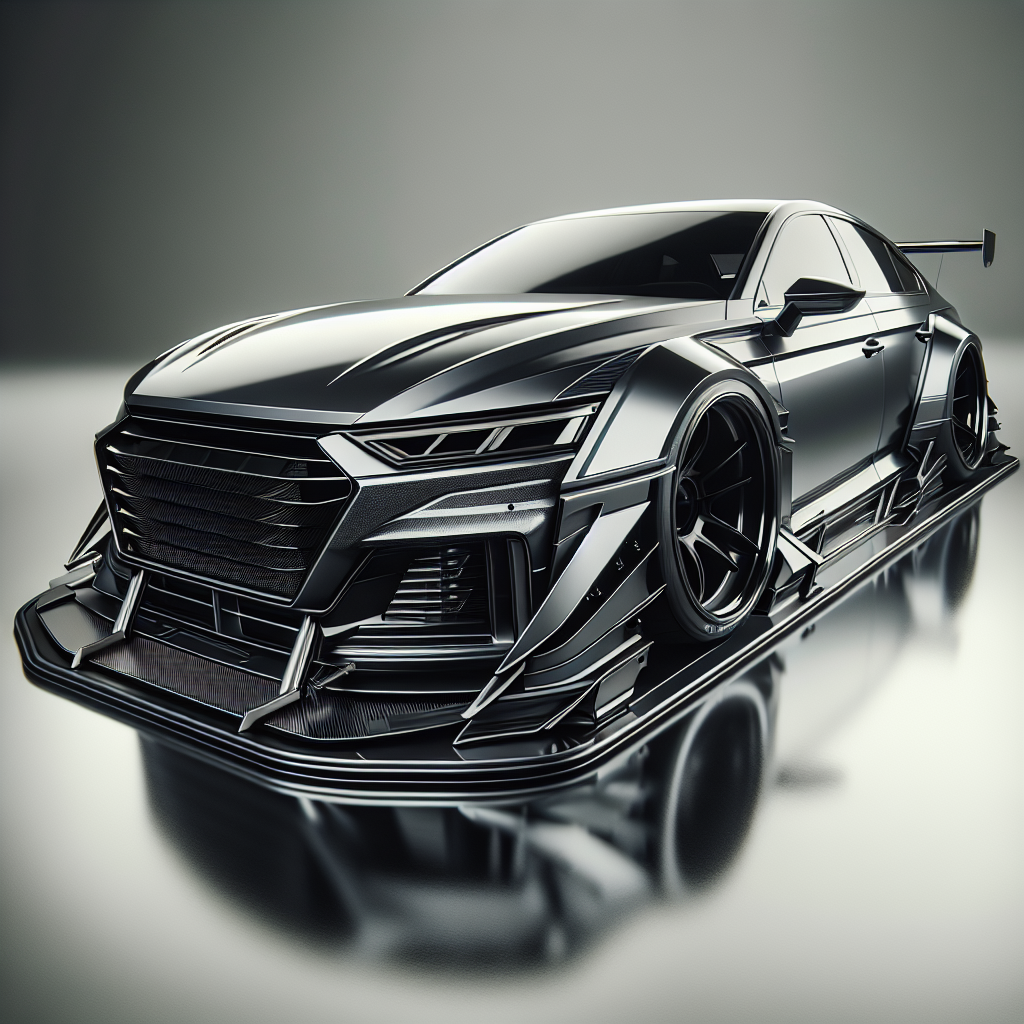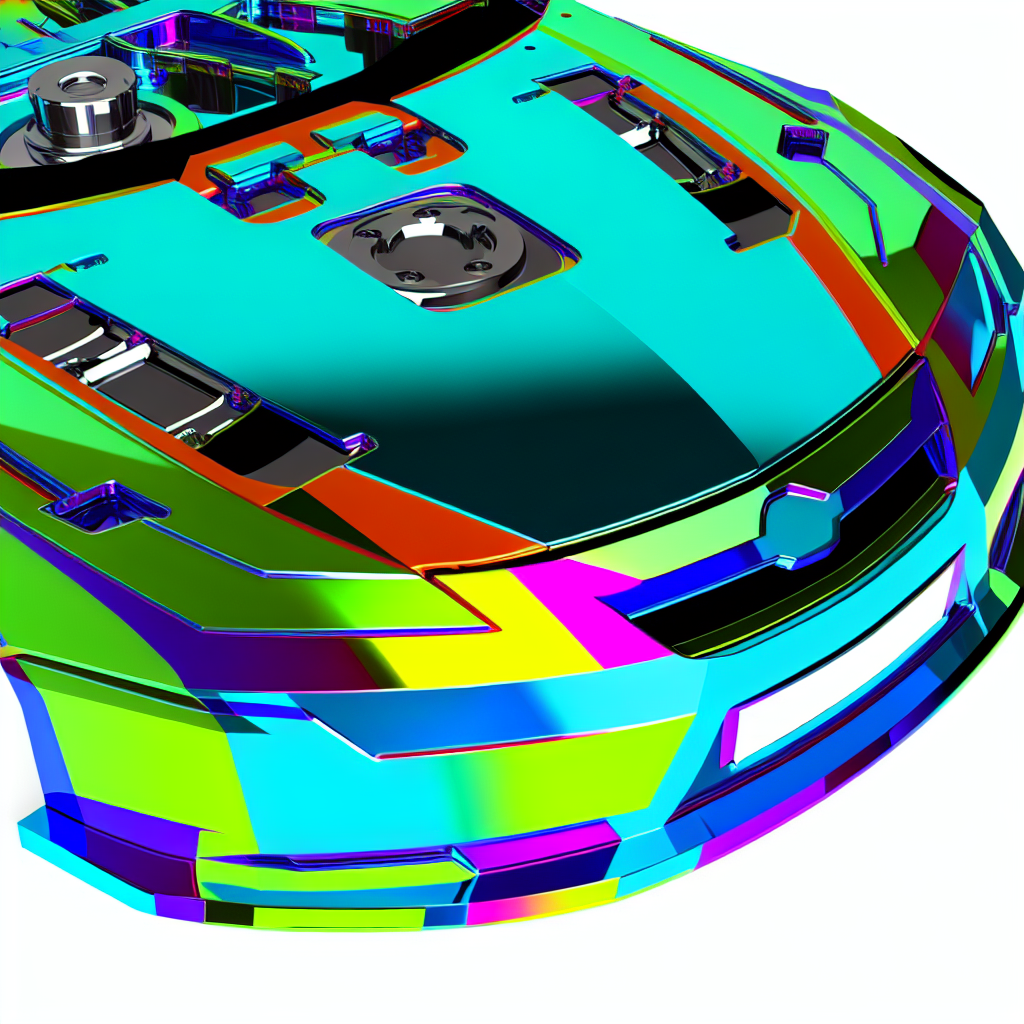Introduction
Are you looking to enhance the appearance of your car? A body kit may be just what you need. At Audio Vision, we offer a wide selection of body kits to give your car a custom look.
A body kit is a collection of exterior modifications that can be installed on a car to enhance its appearance. These modifications are usually made from durable materials such as fiberglass or polyurethane and can include front and rear bumpers, side skirts, spoilers, and diffusers.
Body kits not only enhance the aesthetic appeal of your car but can also improve its performance. They can improve aerodynamics, increase downforce, and reduce drag, resulting in better handling and increased fuel efficiency.
Whether you want to give your car a sporty look or a more aggressive stance, our body kits can help you achieve the desired style. Our experienced technicians can help you choose the right body kit for your car and provide professional installation services.
Body Kits: What Are They and Why Do You Need One?
A body kit is a set of external modifications made to a car to enhance its appearance or performance. It typically includes components such as front and rear bumpers, side skirts, spoilers, and other aerodynamic accessories. Body kits are popular among car enthusiasts who want to personalize their vehicles and improve their overall aesthetic appeal.
There are several reasons why you might consider installing a body kit on your car. Firstly, a body kit can give your vehicle a more aggressive and sporty look, making it stand out from other cars on the road. Additionally, body kits are designed to improve aerodynamics, which can help to reduce drag and increase stability, especially at high speeds. This can result in improved handling and performance.
Moreover, a body kit can also provide functional benefits, such as protecting the car’s body from damage caused by minor accidents or road debris. Some body kits are designed to improve airflow and cooling to the engine, resulting in better performance and fuel efficiency.
Whether you want to enhance the appearance of your car or improve its performance, a body kit can be a great investment. It allows you to customize your vehicle according to your personal tastes and preferences, making it truly unique.
Different Types of Body Kits
When it comes to body kits, there are several different types to choose from. Each type of body kit offers unique styling and functionality for your car. Here are some of the most popular types of body kits available:
1. Front Bumper Body Kit: This type of body kit includes a new front bumper that completely transforms the look of your car’s front end. It may feature a more aggressive design, larger air intakes, or a different grille pattern.
2. Rear Bumper Body Kit: Similar to the front bumper body kit, a rear bumper body kit replaces the original rear bumper and adds a new rear diffuser or aero design. This can give your car a sportier and more aerodynamic look.
3. Side Skirts: Side skirts are installed along the lower sides of the car and can enhance the overall look and aerodynamics. They can also give the car a lower and more aggressive stance.
4. Spoilers: Spoilers can be installed on the rear of the car to improve aerodynamics and add a sportier look. There are various types of spoilers, including lip spoilers, wing spoilers, and roof spoilers.
5. Fender Flares: Fender flares are wider wheel arch extensions that give your car a more aggressive and wider stance. They are commonly used in off-road or rally-inspired car builds.
6. Hood Body Kit: A hood body kit typically replaces the stock hood with a new one that may have vent openings or a more aggressive design. This can improve engine cooling and add a stylish touch to your car.
7. Full Body Kit: A full body kit typically includes all of the above components and completely transforms the look of your car. It offers a cohesive and dramatic visual upgrade to your vehicle.
How to Choose the Right Body Kit for Your Car
Choosing the right body kit for your car is an important decision, as it will greatly impact the overall appearance and performance of your vehicle. Here are some factors to consider when selecting a body kit:
1. Vehicle Compatibility: Ensure that the body kit you choose is compatible with your specific make and model of car. Different body kits are designed to fit different vehicles, and choosing the wrong one can lead to installation issues and damage to the car’s body.
2. Material: Body kits are typically made from fiberglass, polyurethane, or carbon fiber. Each material has its own advantages and disadvantages. Fiberglass is lightweight and affordable, but it is prone to cracking. Polyurethane is durable and flexible, but it is more expensive. Carbon fiber is lightweight and strong, but it is the most expensive option.
3. Style: Consider the style of body kit that best suits your personal taste and the overall aesthetic of your car. There are various styles available, such as aggressive, subtle, or sporty. You can choose a body kit that includes specific components like a front bumper, side skirts, rear bumper, and spoilers.
4. Budget: Determine your budget for a body kit and stick to it. Prices can vary depending on the brand, material, and complexity of the body kit. Set a realistic budget and compare prices from different manufacturers and suppliers to find the best deal.
5. Installation: Consider whether you plan to install the body kit yourself or have it professionally installed. Some body kits require significant modifications and expertise to install properly, so it may be best to consult a professional installer.
6. Reviews and Recommendations: Read reviews and seek recommendations from other car enthusiasts or professionals to ensure the quality and fit of the body kit. Feedback from others can provide valuable insights and help you make an informed decision.
By considering these factors, you can choose the right body kit for your car that meets your needs, fits your budget, and enhances the overall appearance and performance of your vehicle.
Where to Buy a Body Kit
If you are looking to purchase a body kit for your car in Ontario, CA, there are several options available to you. Here are some places where you can buy a body kit:
- Auto customization shops: These shops specialize in car customization and often carry a variety of body kits to choose from. They can also provide installation services if needed.
- Online retailers: There are many online retailers that specialize in car accessories and parts, including body kits. Websites such as Amazon, eBay, and CarID offer a wide selection of body kits for various car models.
- Car dealerships: Some car dealerships may have body kits available for purchase, especially if they specialize in performance or luxury vehicles.
- Local classifieds: You can also check local classified ads, both online and in print, to see if there are any individuals selling body kits in your area.
It is important to note that when purchasing a body kit, you should make sure it is compatible with your car’s make and model. You may need to consult with a professional or do some research to ensure that the body kit you choose will fit your car properly and meet your needs.
How to Install a Body Kit
If you have purchased a body kit for your car, you may be wondering how to install it. Installing a body kit can be a complex process, so it’s a good idea to have some knowledge of auto mechanics before attempting to do it yourself. Here are some general steps to follow when installing a body kit:
- Prepare the car: Before you start installing the body kit, you’ll need to prepare your car. Make sure the car is clean and free of debris. Remove any existing parts that the body kit will replace, such as bumpers or side skirts.
- Test fit the body kit: Before you begin installing the body kit, it’s important to test fit all of the components. This will ensure that they align correctly with your car’s body. If any adjustments need to be made, now is the time to make them.
- Attach the components: Once you have ensured that the body kit fits properly, you can begin attaching the components. Follow the manufacturer’s instructions for attaching each part. This may involve using screws, clips, or adhesive.
- Secure the body kit: After all of the components are attached, you’ll need to secure the body kit to your car. This may involve using additional screws, bolts, or adhesive. Again, refer to the manufacturer’s instructions for the specific details.
- Test the installation: Once the body kit is fully installed, take your car for a test drive to ensure that everything is secure. Check for any rattles or vibrations that could indicate loose parts. If you notice any issues, double-check the installation and make any necessary adjustments.
It’s important to note that while the steps outlined above are a general guide, the specific installation process will vary depending on the make and model of your car and the type of body kit you have purchased. If you are unsure about any aspect of the installation, it’s always best to seek the help of a professional.
Car Body Kit Maintenance
Maintaining a car body kit is essential to keep it looking its best and to prolong its lifespan. Here are some maintenance tips to consider:
- Clean your body kit regularly: Use a gentle car wash soap and a soft sponge or microfiber cloth to clean your body kit. Avoid using harsh chemicals or abrasive tools that can damage the surface.
- Inspect for damages: Regularly inspect your body kit for any signs of damage or loose parts. Repair or replace any damaged parts to prevent further issues.
- Protect against UV rays: UV rays can cause fading and discoloration of your body kit. Apply a protective coating or wax specifically designed for plastic or fiberglass to protect it from UV damage.
- Keep your car protected: When parking your car, try to choose shaded areas or use a car cover to protect your body kit from sun exposure.
- Avoid contact with abrasive surfaces: Be cautious when parking or driving near curbs, speed bumps, or rough surfaces. Contact with these surfaces can cause scratches or damage to your body kit.
- Regularly check for loose fasteners: Ensure that all fasteners and bolts on your body kit are tightened properly. Loose parts can cause rattling and may eventually lead to damage.
By following these maintenance tips, you can ensure that your car body kit remains in good condition and continues to enhance the appearance of your vehicle.
Body Kit Laws and Regulations in California
Question: Are there any laws or regulations in California regarding the use of body kits on vehicles?
Yes, there are laws and regulations in California that govern the use of body kits on vehicles. These laws are put in place to ensure safety and uphold vehicle performance standards. It is important for car owners to be aware of these laws before installing a body kit.
- In California, the body kit must not obstruct the driver’s view or impair the operation of the vehicle.
- The body kit must not extend beyond the original dimensions of the vehicle, as specified by the manufacturer.
- All added body kit components must be securely attached and not pose a risk of coming loose while driving.
- It is illegal to modify or alter the vehicle’s emissions control system, including the use of body kits that affect the exhaust system.
- Certain body kit modifications may require approval from the California Air Resources Board (CARB) to ensure compliance with emission standards.
- Body kit modifications that alter the lighting system of the vehicle must meet the requirements set forth by the California Vehicle Code.
It is important to consult with a professional and knowledgeable installer who is familiar with the laws and regulations surrounding body kits in California. Failure to comply with these laws can result in fines, citations, or even the rejection of a vehicle’s registration or inspection.
Body Kit Insurance
If you’re considering adding a body kit to your car, it’s important to understand how it may impact your insurance coverage. Generally, modifying your vehicle with aftermarket parts can affect your insurance premiums since it can increase the value of your car and potentially add additional risk.
When it comes to body kits, insurance companies may classify them as modifications that can impact the performance or safety of your car. As a result, some insurance providers may require you to disclose any modifications, including body kits, and could potentially adjust your premiums accordingly. It’s important to check with your insurance provider to understand their specific policies and requirements regarding body kits.
In addition, it’s essential to consider the potential impact on your insurance coverage in the event of an accident. If your car is involved in a collision, insurance companies will typically assess the damages and determine the cost to repair or replace the damaged parts. If you have added a body kit to your car, it’s important to ensure that it is covered under your insurance policy. In some cases, insurance providers may require additional coverage for aftermarket parts to be included in your policy.
To protect yourself and your investment, it’s crucial to discuss any plans for adding a body kit with your insurance provider. They can provide you with the necessary information regarding coverage and any potential changes to your policy. Additionally, they can help you understand any additional requirements or documentation that may be needed.
Audio Vision | Car Audio West Covina

Looking for car audio west covina? Audio Vision is the best place to buy car audio in West Covina.
Product Brand: Audio Vision
Product Currency: USD
Product Price: $299
Product In-Stock: InStock
5





